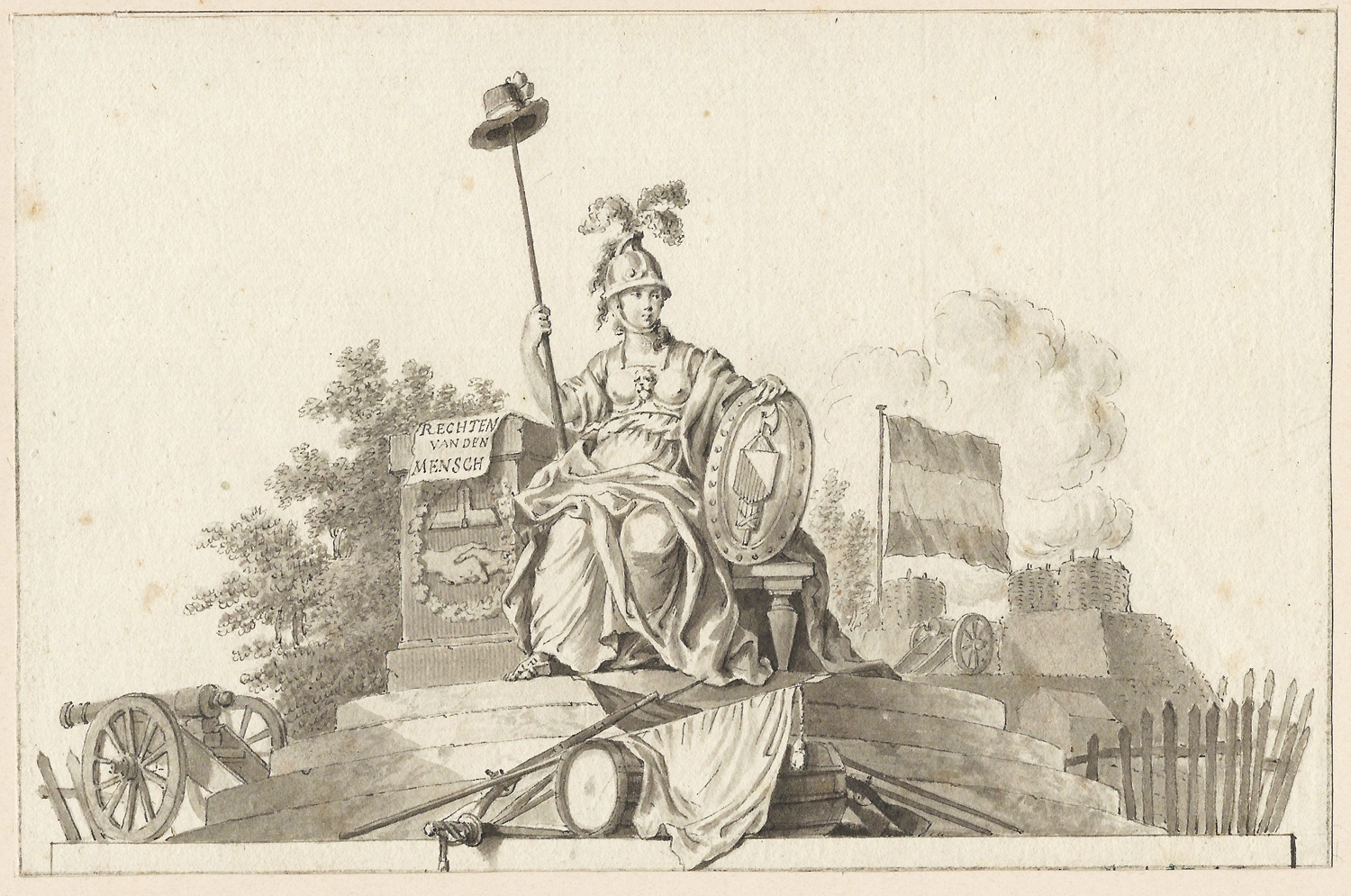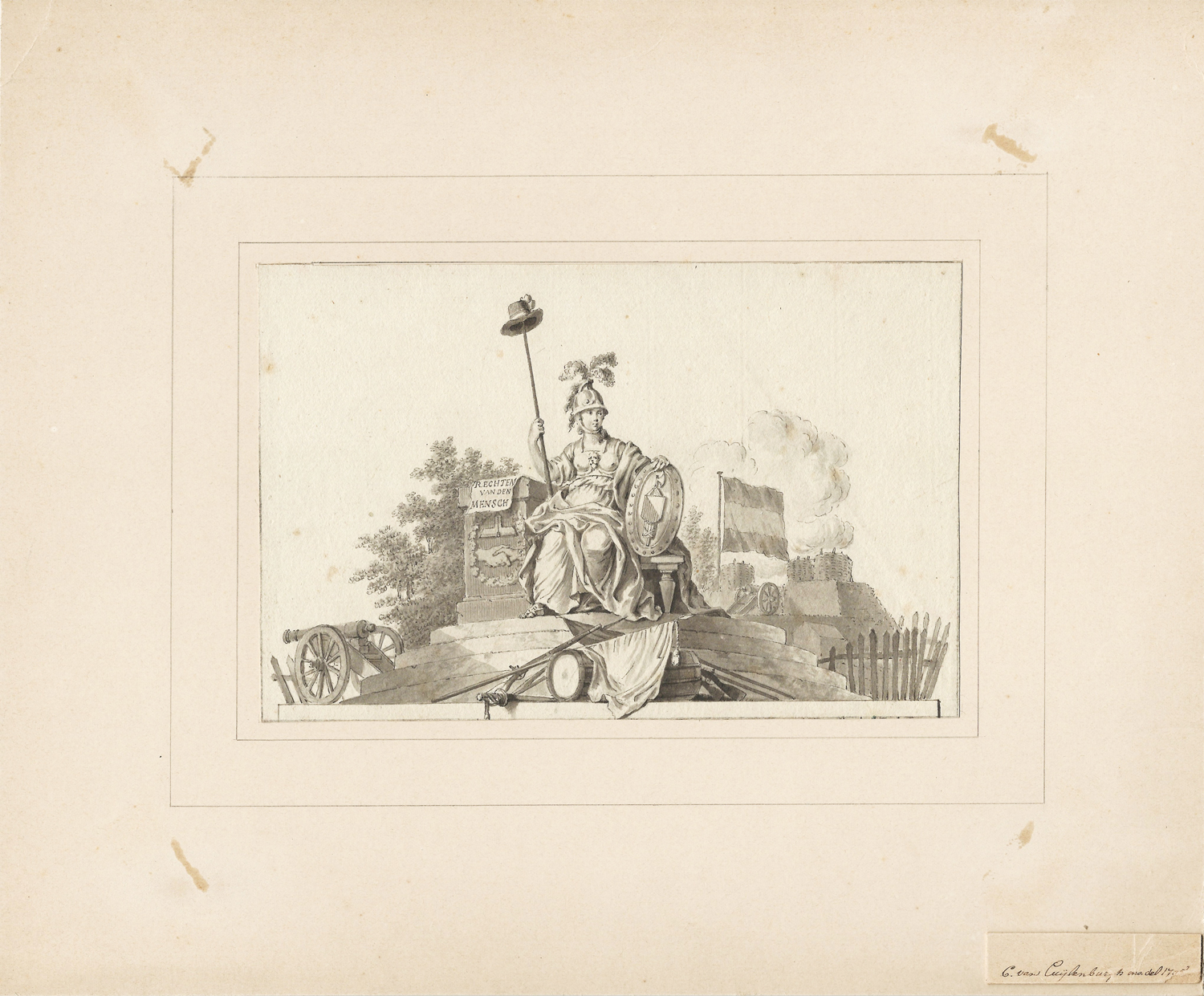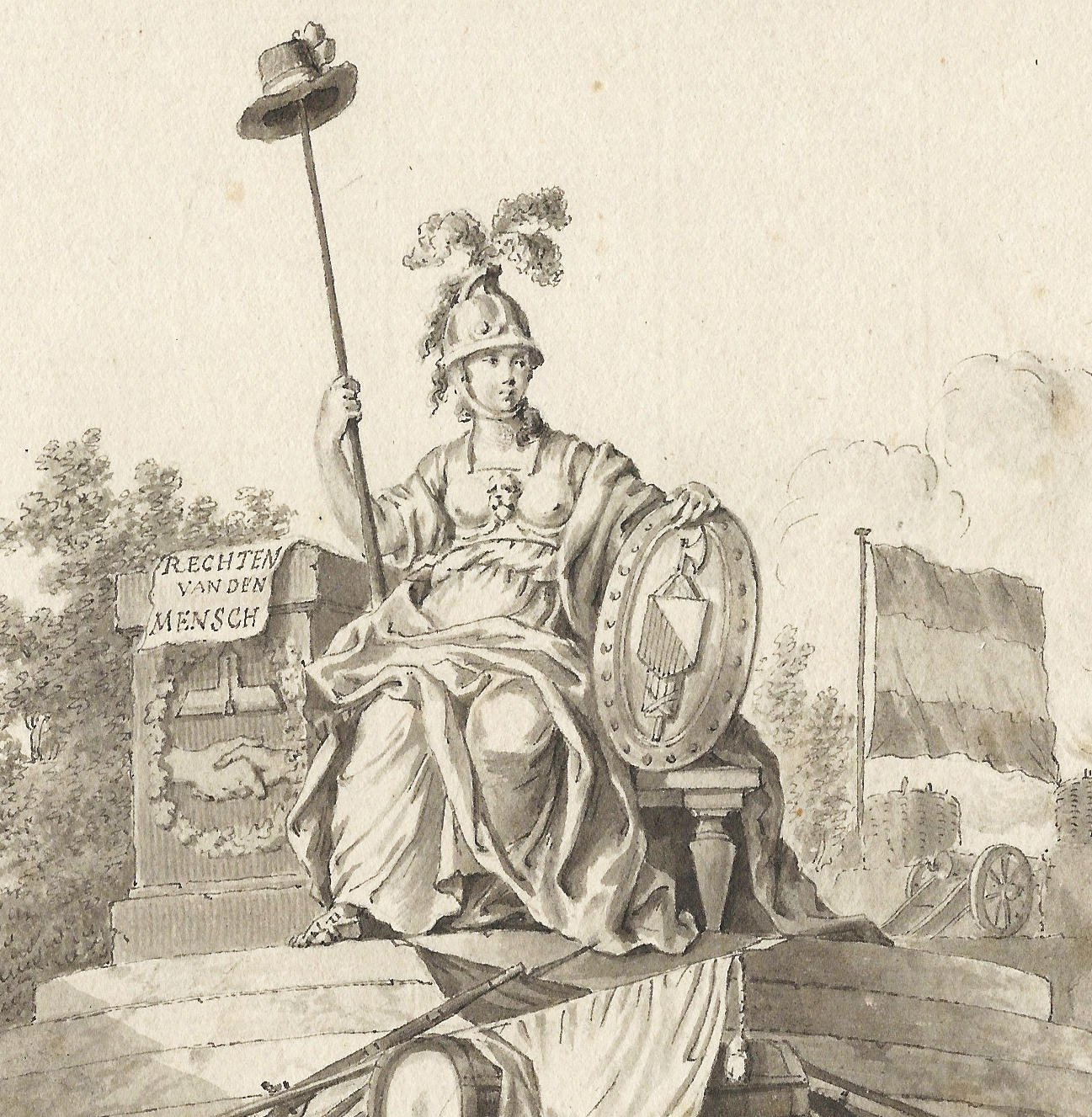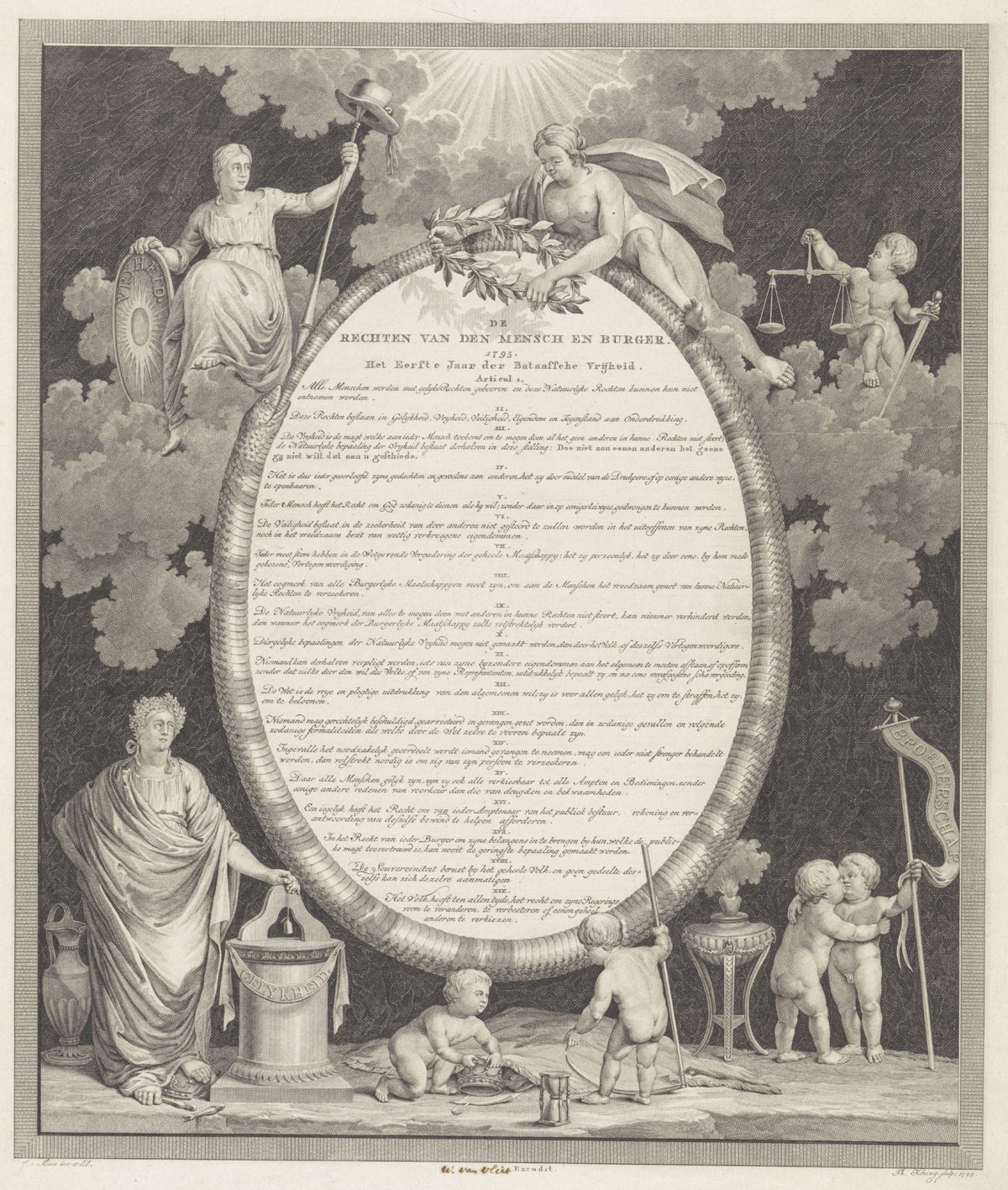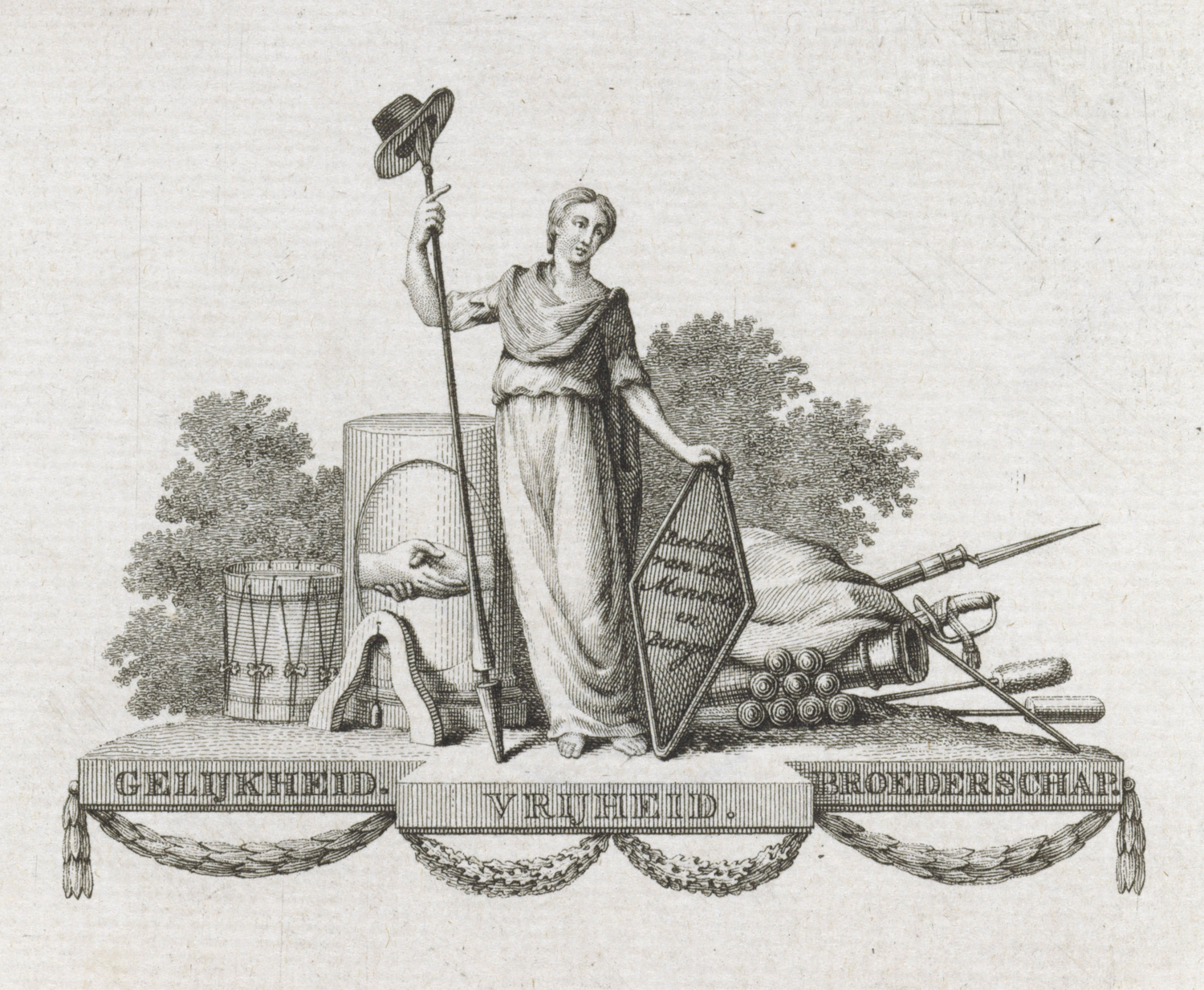CORNELIS VAN CUYLENBURGH II (Utrecht 1758 – 1827 The Hague)
Cornelis van Cuylenburgh II (Utrecht 1758 – 1827 The Hague)
An Allegory of the Rights of Men
Pen and grey ink, grey wash, pencil framing lines, 132 x 201 mm; hinged onto an early mount with pencil framing lines
Inscribed ‘RECHTEN / VAN DEN / MENSCH’ (‘rights of men’) pen and grey ink, recto, and signed and dated ‘C. Van Cuylenburgh inv. del. 1795’ (pencil, verso)
Provenance
Private collection, Germany
***
Cornelis was born in Utrecht as son of the sculptor Cornelis van Cuylenburgh I, who was also his first master from 1770.1 Around 1792 he moved to The Hague, where he remained for the remainder of his life, apart from a journey to Antwerp in 1816. He was appointed director of the drawing academy at The Hague. Cuylenburgh was active as a draftsman and miniaturist and painted fashionable portraits and landscapes in oils. His most ambitious work was an allegory of the return of the Prince of Orange after the Battle of Waterloo in 1815, and is preserved in the Rijksmuseum in Amsterdam.2 Other works by the artist are in the Museum Simon van Gijn in Dordrecht and in the Centraal Museum in Utrecht.
One day after the flight of Stadtholder William V to England, the Batavian Republic (Bataafse Republiek) was established in The Netherlands on 19th January 1795, modelled on the French Revolutionary Republic. Shortly afterwards, on the 31st January, a declaration of the rights of men and burghers (‘mensch en burger’) was proclaimed by the new Patriottic government, the earliest such document in The Netherlands. A wave of optimism spread around the land, and painters and draftsmen swiftly poored the new ideas of freedom and egality into pictorial form.
An etching entitled ‘De Rechten van den Mensch en Burger’ (‘The Rights of Men and Burghers’) was made in the same year by Theodoor Koning after a drawing by Jacobus van Meurs, and published by Willem van Vliet, listing the new civilian rights in a richly decorated border.3 In our well preserved drawing, Van Cuylenburgh has depicted an allegorical female figure representing the Batavian Republic, holding a staff crowned by Patriottic hat representing Freedom, and various other symbols of the new government. The drawing is likely to have been intended to be engraved, and is comparable to an etched vignette by Rienk Jelgerhuis of the same year, 1795, which is embellished with the same allegorical attributes of Freedom’s hats, clasped hands, cannons and spears.4
SOLD
1. For the artist, see the biography in Saur Allgemeines Künstlerlexikon: die bildenden Künstler aller Zeiten und Völker, Munich 1992- , vol. 23 (1999), p. 235.
2. Oil on canvas, 186 x 242 cm, inv. no. A 1216; P.J.J. van Thiel, All the paintings of the Rijksmuseum in Amsterdam, Amsterdam 1976, no. A 1216.
3. An impression is preserved in the Rijksprentenkabinet of the Rijksmuseum, Amsterdam, 525 x 430 mm, inv. no. RP-P-OB-67.789; Klaus Herding, La révolution française et l'Europe, 1789-1799, Paris 1989, vol. III, cat. no. 851.
4. Etching, 89 x 97 mm, Rijksprentenkabinet, Rijksmuseum, Amsterdam, inv. no. RP-P-OB-86.491
